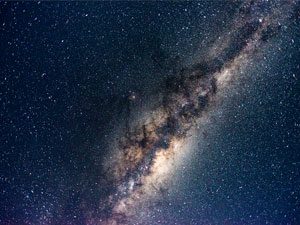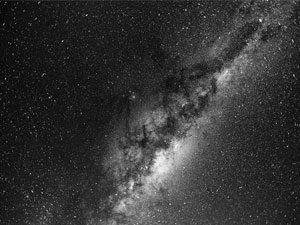Dr. Dante Minniti: Los misterios de la Vía Láctea
La inmensidad del Universo ha cautivado al ser humano desde tiempos inmemoriales. Incluso las civilizaciones más primitivas dirigieron sus destinos a partir de las observaciones astronómicas. Hoy, los avances científicos y tecnológicos permiten a los astrónomos lograr observaciones y análisis de gran precisión, develando así los misterios que esconde el espacio exterior.

El Dr. Dante Minniti, director del programa de Doctorado en Astrofísica de la Universidad Andrés Bello, lidera diversas investigaciones que tienen como objetivo develar los secretos que aún guarda el Universo.
La primera de ellas corresponde a una iniciativa internacional, la cual tiene como objetivo el mapeo de la Vía Láctea, la galaxia que alberga nuestro sistema solar, con el fin de conocer características tales como su estructura tridimensional.
La primera etapa de esta investigación consistió en seis años de observación astronómica llevada a cabo desde el telescopio VISTA del Observatorio Paranal, en Chile. A partir de estas imágenes, el equipo del Dr. Minniti comenzó a estudiar las zonas más desconocidas de la galaxia.
“Trabajamos con longitudes de luz infrarroja, la cual es invisible para nosotros, pero permite penetrar todas las nubes de polvo y gas que no nos dejaban ver el pa- norama completo. Es como abrir una nueva ventana a nuestra galaxia”, explica el académico de la Facultad de Ciencias Exactas.
La investigación del Dr. Minniti ya ha dado los primeros frutos. Recientemente publicaron un estudio de impacto mundial, en el cual definían la existencia en la región central de la Vía Láctea de estrellas jóvenes, con edades menores a los 100 millones de años.
“Hemos encontrado 655 candidatas a estrellas variables, las cuales pertenecen a un tipo especial llamado Cefeidas. Estas estrellas tienen la capacidad de expandirse y contraerse en ciclos periódicos, cambiando su brillo”, destaca el director del Doctorado en Astrofísica.
Asimismo, el Dr. Minniti comenta que otra de sus pasiones es la búsqueda de planetas fuera del sistema solar, tarea para la cual utiliza los mejores telescopios de Chile. “Esto es muy interesante porque todos queremos encontrar otra Tierra, o saber si hay vida en el Universo. Si bien no tiene una aplicación inmediata, quién sabe lo que pudiese descubrirse en el futuro”, relata el astrónomo.
Descargar PDF: Los misterios de la Vía Láctea
The mysteries of the Milky Way
The immensity of the universe has captivated mankind since immemorial times and even the most primitive civilizations determined their destinies based on astronomical observations. Today, scientific and technological advances allow astronomers to observe and analyze the universe with high precision, thus revealing the mysteries hidden in outer space.

Dr. Dante Minniti, Director for the Doctorate Program in Astrophysics, Faculty of Exact Sciences at Universidad Andrés Bello, leads a diverse line of research that aims to discover the secrets that universe still keeps.
One of these investigations is an international collaboration, the objective of which is to map the Milky Way, the galaxy that harbors our solar system. This research will reveal a number of characteristics about the Milky Way, such as its tridimensional structure.
The first stage of this project consists in a six year period of astronomical observations using the VISTA telescope, located at the Paranal Observatory in Chile. From these images, Dr. Minniti and his team will begin to study the most unknown areas of our galaxy.
“We work with infrared wavelengths that, although invisible to us, can penetrate all of the cosmic dust and gas clouds that prevent us from seeing a complete panoramic image of the universe. It is like opening a new window to our galaxy,” explains Dr. Minniti.
This research has already provided initial results that were recently published in a high-ranking international scientific journal. This published study details the existence of young stars (less than 100 million years old) in the central region of the Milky Way.
“We have [also] found 655 variable star candidates termed Cepheids. These stars are able to expand and contract in periodic cycles, thus changing in brightness,” highlights Dr. Minniti.
Dr. Minniti also comments that another of his passions is the search for planets outside of our solar system, a task he undertakes by using the best telescopes in Chile. “This is very interesting because we all want to find another Earth or to know if there is life in the universe. While this does not have an immediate application, who knows what we may discover in the future,” concludes Dr. Dante Minniti.
Download PDF: The mysteries of the Milky Way
